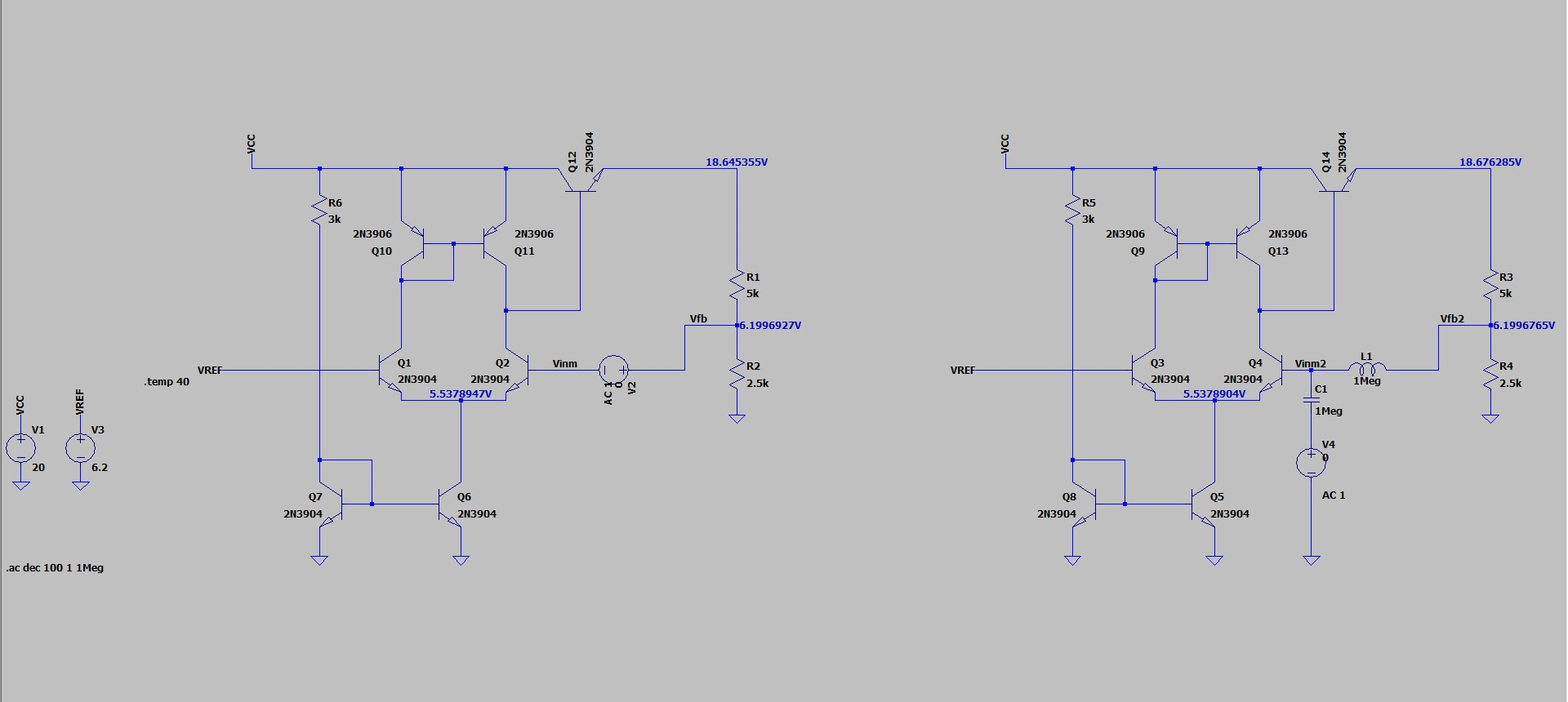I am implementing what I've learned over the past couple of days. This relates mainly to the simulation of a voltage regulator.
I built the (roughly) same circuit in both TINA TI and LTspice to determine the value of the loop gain of the circuit.
The results are quite different. For the TINA TI simulation the loop gain is 43dB, while for the LTspice simulation the loop gain is 56dB. One is within the desired design parameters, the other is not.
I've implemented the sims with both the traditional breaking the loop + test voltage, as well as with voltage injection (?).
TINA TI sim:
The results are as follows:
circuit on the left: 148.4 circuit on the right: 147.8
LTspice sim:
Where am I wrong and why?
EDIT 1: I did try and change the beta of transistors to see if there any differences between TINA TI, but the impact was minimal.
EDIT 2: I did try to set the inductor and capacitor to be 1TH/1TF, but it didn't work. Also changed the values in the TINA simulation and I did not sight any difference.
EDIT 3: I replaced the error amplifier with a Voltage Controlled Voltage Source and decided to compare the results between TINA and LTspice. The results were very close to each other. Simulated circuit is shown below:
So I'd say the problem is not with the method of finding loop gain, but something about the way the sims treat the more complex circuit?






